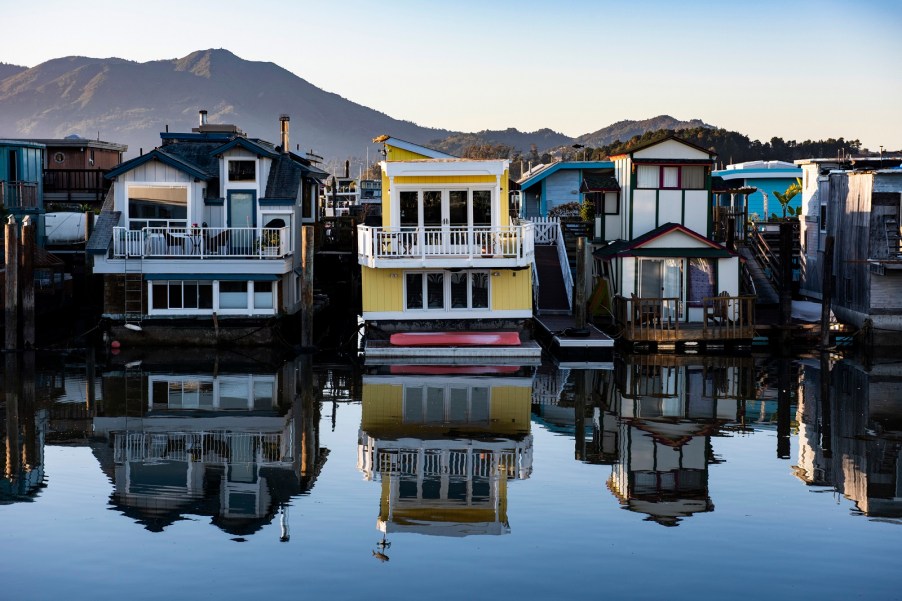
[WATCH] 2-Story House Drives Across San Fran Bay in Rare Feat
In the heart of the San Francisco Bay Area, a recent event captured the attention of locals and visitors alike: the remarkable journey of a two-story home as it drove across the Bay waters from Redwood City to Sausalito. Spectators claimed it reminded them of the endearing Pixar movie “Up.” While both dwellings sure did float, unlike the balloon-powered salesman’s rickety casa, this one happens to be a boat. The San Francisco houseboat was relocating from one side of the bay to another.
Houseboats have been a part of the Bay Area’s landscape for decades. In Sausalito, their origins trace back to the late 1800s when waterfront areas experienced rapid urbanization. Land dwellers bought up and turned fishermen’s homes into second houses. Over time, urbanites seeking alternative housing in the mid-20th century migrated to dock living. Some residents have called the local marinas their home for 30-plus years.
You can watch a video of the houseboat making its way across the bay embedded below.
Despite their substantial size and suburbanesque appearance, these homes possess a near-remarkable ability to float. Typically constructed atop buoyant pontoons or hulls, the homes distribute their weight evenly across the water’s surface, allowing them to remain afloat. Additionally, the buoyancy provided by the pontoons enables houseboats to navigate tidal fluctuations and water currents, making them as close to what you could call “well-suited” for marine life on the Bay.

In this case, the Redwood City homeowner had likely struck a deal with the city to relocate. It’s one of the last houseboats in that marina to do so. The local city council had asserted that the homes were blocking access to the state waterway.
The relocation of the two-story San Francisco houseboat from Redwood City to Sausalito shed light on the intricacies of moving such structures across the Bay. The job requires experienced mariners and movers who understand the importance of meticulous planning and timing. Factors such as tidal patterns, water depth, and weather conditions must be carefully considered to ensure a safe and successful migration.
NBC Bay Area interviewed a Sausalito marina resident, Phil Hott, about the tricky move. “It was up a twisty channel, so you have to have the tide right, and you have to come down without the wind blowing you into the bank,” he explained.
The weight of a houseboat also factors into the level of precariousness. “These things are very heavy. Then it has to travel through the Bay. And the winds and the tide changes, and the current is going out,” Hott said. “You don’t want it to drag you out to the Golden Gate Bridge.”
What’s more, once you get close to the new landing zone, you have to ensure the tide is quite high.
“It’s all about timing. When it comes in here, you have to have a tide over a certain height. You don’t want it to get halfway and stuck.”
The San Francisco houseboat move was certainly a sight and will likely be one of the last events of this nature once removal from Redwood City is complete.






